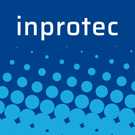The matrix encapsulation is the ideal process for encapsulating valuable substances such as oils or active components in a suitable material. In this process, different substances are embedded in a base material by means of the fluidized bed technology. Whereas, in the coating process, the active agents are covered, the matrix encapsulation relies on a different process. Liquids or ultra-fine powders are mixed with the base component – the matrix – in the fluidized bed in such a way that the active agents are distributed evenly in the particle. Active agent charges of up to 50–60 % can be achieved in the resulting particles without impairing the pourability.
The matrix encapsulation offers a diverse functionalization of the particles. Depending on the later use, different particle properties can be achieved. For example, the base material can protect the encapsulated liquid droplets (e.g. omega-3 fatty acids or vitamins) efficiently against oxidation. Where incompatibility within the formulation would interfere (e.g. in bleaches, reductants and oxidants), the use of encapsulated materials prevents direct contact with other components in further processing steps. At the same time, the encapsulation allows controlled release of liquid or solid active agents (silicone defoamers, aromas, scents, etc.) in the dissolving of a complex powder formulation by controlled release or slow release mechanisms.
Process
To transform oily components into free-flowing bulk materials or powders, they are first emulgated in a watery solution. If these are fine powders, they are often suspended or dispersed in a melt of the encapsulating medium. The next step, depending on the type of material, is:
- in the case of a watery emulsion/suspension, the drying of the external watery phase with the dissolved matrix material,
- in the case of a melt emulsion/suspension, the spray solidification.

The result are powders and granulates with flexibly settable particle sizes between 20 and 5,000 µm. The oily droplets encapsulated in the granulates usually have an average diameter of 1 µm.
Advantages
- Free-flowing granulates with up to 50–60 % liquid charges
- Gentle handling of sensitive components
- Protection of particles against external influences
- Protection of particles against internal incompatibilities
- Specific controlled release and slow release mechanisms
- Improved storage stability
- Particles suitable for tablet forming (direct compression)

